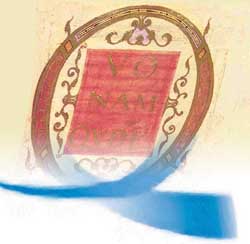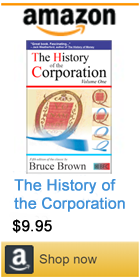Chapter Seven
THE TWO GREAT armies met in Galilee near the town of Nazareth where Jesus Christ had preached his gospel of peace eleven centuries before.
A cloud of yellow banners fluttered above the largest Moslem force ever seen in the Holy Land, perhaps as many as 100,000 soldiers gathered for jihad, or holy war.
Against them marched a much smaller army of Crusaders, or Christian holy warriors. Although numbering only twenty thousand, the Crusaders possessed a sacred relic which they believed powerful enough to insure victory. King Guy of Jerusalem, their leader, carried a piece of wood purported to be from the “true cross.”
His opposite, Sultan Saladin, founder of the Ayyubid dynasty and a Moslem saint, relied more on strategic planning. He lured the Christian army into the open by capturing the nearby city of Tiberius, where the Countess of Tripoli awaited the return of her Crusading husband Raymond in oleander scented gardens.
Raymond of Tripoli resisted taking Saladin's bait, though. An experienced desert warrior, he knew the devastating effects of a forced march in the shimmering summer heat. And by exposing their force in the open, he knew the Christians would essentially be betting the fate of Jerusalem on the outcome at Tiberius.
But the Count of Tripoli was only one voice at the Christian war council. King Guy also listened to the flamboyant freebooting rogue, Reginald of Chatillon. The Frankish lord of the citadel Krak des Chevaliers, Reginald had long harassed Moslems on the road to Mecca, and once even mounted a naval raiding party on the holy city of Islam.
The other who spoke with authority was dark Gerard de Ridefort, grand master of the Catholic Church's first military corporation, the Poor Knights of Christ, commonly called the Knights Templar. A hard and haughty man, de Ridefort fought not for riches, but for religion. He and his men were armed monks who slew to save their souls the way other monks prayed for theirs.
Founded in 1120 when Hugh de Payens and seven other Frankish knights banded together to protect Christian pilgrims en route to Jerusalem, the Templars soon assumed a larger mission. They and their many subsequent imitators – including the revamped Hospitallers, Teutonic Knights, Knights of Calatrava, and Knights of St. James of Compostella – became the standing army of the papacy.
In battle, especially in the early years, the Templars were renowned for their valor. They vowed to never retreat unless out-numbered by more than three-to-one, and there were battles, such as the Springs of Cresson, when they attacked Moslem forces more than 50 times their size. In one sea battle, the Templars sank one of their own ships, sacrificing 140 Christians because they knew they could take 1,500 Moslems down with them. |
|
The History of the Corporation
|

Astonisher.com is pleased to present The History of the Corporation, Volume One by Bruce Brown.
Here is the Table of Contents for excerpts from the entire book, which covers 1,000 years from the birth of the first modern corporation through the the First Dominion of the corporation.
About the Author: Bruce Brown is the author of eight books, including Mountain in the Clouds, an environmental classic, and The Windows 95 Bug Collection, which was put on display in the Smithsonian Institution in Washington, DC.
He has done investigative reporting for the New York Times (the Karen Silkwood story), foreign correspondence for Atlantic Monthly (baseball in Cuba), and book reviews for the Washington Post Book World, as well as script-writing for PBS-TV (The Miracle Planet).
He is also a successful businessman and CEO, having created BugNet and built it into the world’s largest supplier of PC bug fixes before it was acquired by a Fortune 500 company at the height of the dot com boom.

|
|
|
The Templars' bravery inspired the church and even many secular leaders to entrust their most valuable possessions to them, both for conveyance and simple safekeeping. Thus, as the Hospitallers evolved from a medical corps to armed combatants to pirates, the Templars evolved from warriors to couriers to bankers. Before the end of the century, English ecclesiastic Walter Map observed, “nowhere except at Jerusalem are they in poverty.”
The Templars' round churches, imitating the church of the Holy Sepulcher in Jerusalem, became the financial centers of northern Europe. In London and Paris, the Temples were used as the royal treasuries. The Templars' began making loans by the middle of the twelfth century, first to St. Louis and Pope Alexander III (who paid 5 percent interest), and ultimately to most of the crown heads of Europe, who it may be added listened to them with particular attention thereafter.
In the Christian war council that was held on the night of July 2, 1187, Master Templar de Ridefort mocked Raymond of Tripoli's caution. King Guy typically took no action initially, but when de Ridefort returned to his tent secretly later that night, the king decided to attack Tiberius. Because of their mutual dislike for the Count of Tripoli, both King Guy and Master de Ridefort savored the prospect of rescuing the Countess of Tripoli over her husband's objections.
When the Crusaders marched out for battle their ranks were swelled by a large number of hasty conscripts. It was said that no one was left inside the walls of Acre except for old women and young children. The first day’s march progressed uneventfully, with the Crusdader army camping for the night at Saffuriyya. When the Crusaders arose on the morning of July 3, they thought they could reach Tiberius before the sun set that evening, but they never got that far.
Saladin's archers harried the Christian advance, while others in the Moslem force set brush fires upwind from the advancing Crusaders, forcing them to march all day in smoke and heat. Evening found the Crusaders barely half way to their goal. Exhausted and almost out of water, they halted in the midst of the desert on the lower plain of Esdraelon.
All night, the Moslem army kept up a furious drumming, preventing the Crusaders from sleeping. The Christians' foreboding increased with the swelling rhythms. Late that night someone rode through the camp crying out, “Alas, Lord God, the war is over; we are dead men! The kingdom is undone.”
When dawn came the Crusaders' worst fears were confirmed. They were entirely surrounded. Immediately the Christian knights ran for their steeds, but the Moslem archers were ready for them. Saladin's supply corps had already placed camel-loads of arrows at regular intervals, and now his archers used these caches to rain uninterrupted death on the Christian ranks. Many knights and their horses were killed before they ever got into action.
The parched Christian foot soldiers chose this moment to spontaneously attack. Inspired by the presence of their woody relic – and driven wild by the sight of the waters of Galilee glimmering in the distance – they broke ranks and charged Saladin's encircling ring in a wild wave. For six hours savage hand-to-hand combat raged, but not a single Frankish foot soldier got through. Finally, at midday King Guy and a contingent bearing the royal standard retreated into the hills – or horns – of Hattin to make their last stand.
It was near here that Jesus Christ supposedly preached the Sermon on the Mount. Modern authorities identify the mount as Karn Hattin a dozen miles or so northeast of Nazareth. Jesus’ message then was one of radical peace. “Blessed are the peacemakers,” he said, adding emphatically, “Thou shall not kill.” And “Do not resist one who is evil, but if any one strikes you on the right cheek, turn to him the other also ... I say to you, love your enemy and pray for those who persecute you.”
Eleven centuries later, the din of Templar arms testified to how much corporate Catholicism had transformed the Christian creed...
"The History of the Corporation, Volume One" © Copyright 2003 Bruce Brown
Jacket illustration and design by Running Dog.
|
This is a free excerpt from The History of the Corporation by Bruce Brown.
The complete book is now available for Kindle on Amazon...

Key words from the remainder of Chapter 7 of
The History of the Corporation, Volume One
Jesus
Poor Knights of Christ, or Templars
Satan
Pope Leo IX
Hildebrand
Greek Orthodox Patriarch Michael Cerularius
Constantinople
1053
Great Schism
St. Bernard
1128
holy war
Pope Urban II
Peter the Hermit
Guibert de Nogent
Jerusalem
First Crusade
anti-Semitism
people's crusade
1096
Niccea
Second Crusade
Cistercians
Mary's robe
Cistercian order
Carta Caritatis, or Charter of Charity
annual meeting
St. Stephen Harding
commercial wool production
Meaux
Zwetl
pioneered veterinary medicine
mercury and alum to treat skin diseases
commercial innovators
sheep
wool grading system
mixed wool
1165
abbey of Louth Park
wolds of Lincolnshire
Flemish merchant William Cade
Alphonso I of Portugal
1143
Cistercian mother-house at Citeaux
Conrad of Eberbach
Saladin
Honor of the Faith
Yusef ibn Ayyub
Damascus
bishop of Acre
orientalized Franks
Kingdom of Jerusalem
hashishin assassins
Knights Hospitallers
Knights Templars
Reginald of Chatillon
de Ridefort
jihad
Battle of Lepanto in 1571
© Copyright 1973 - 2020 by Bruce Brown and BF Communications Inc.
Astonisher and Astonisher.com are trademarks of BF Communications Inc.
BF Communications Inc.
P.O. Box 393
Sumas, WA 98295 USA
(360) 927-3234
Website by Running Dog  |